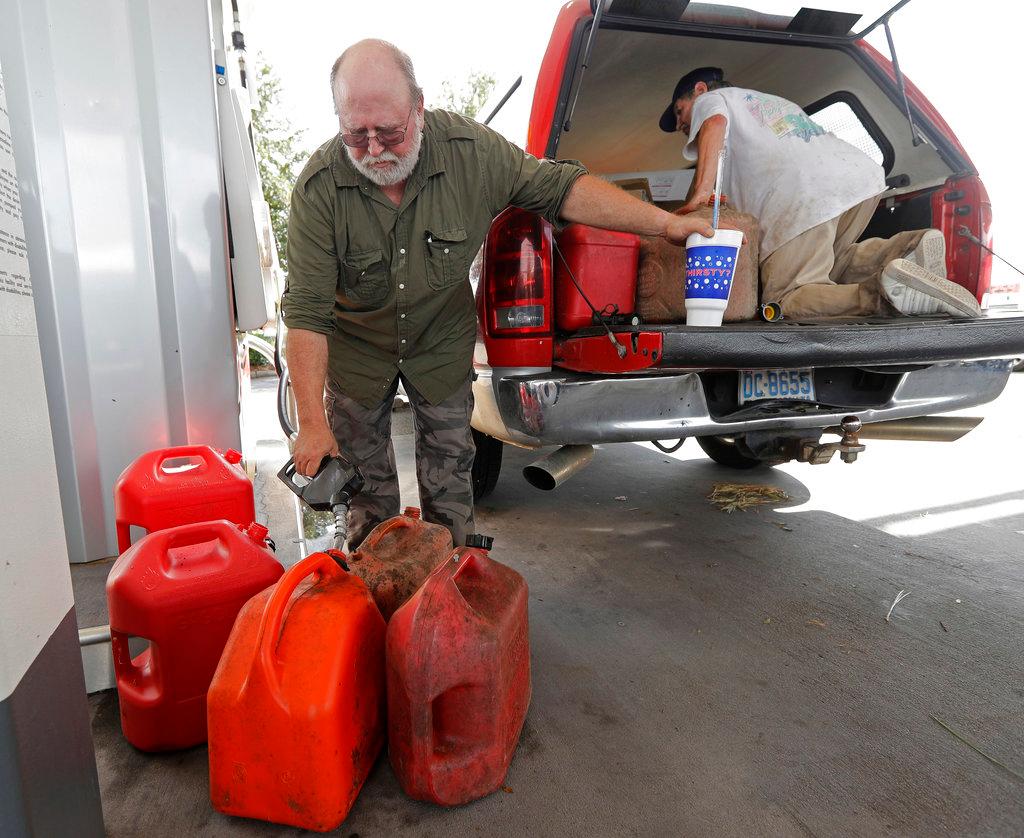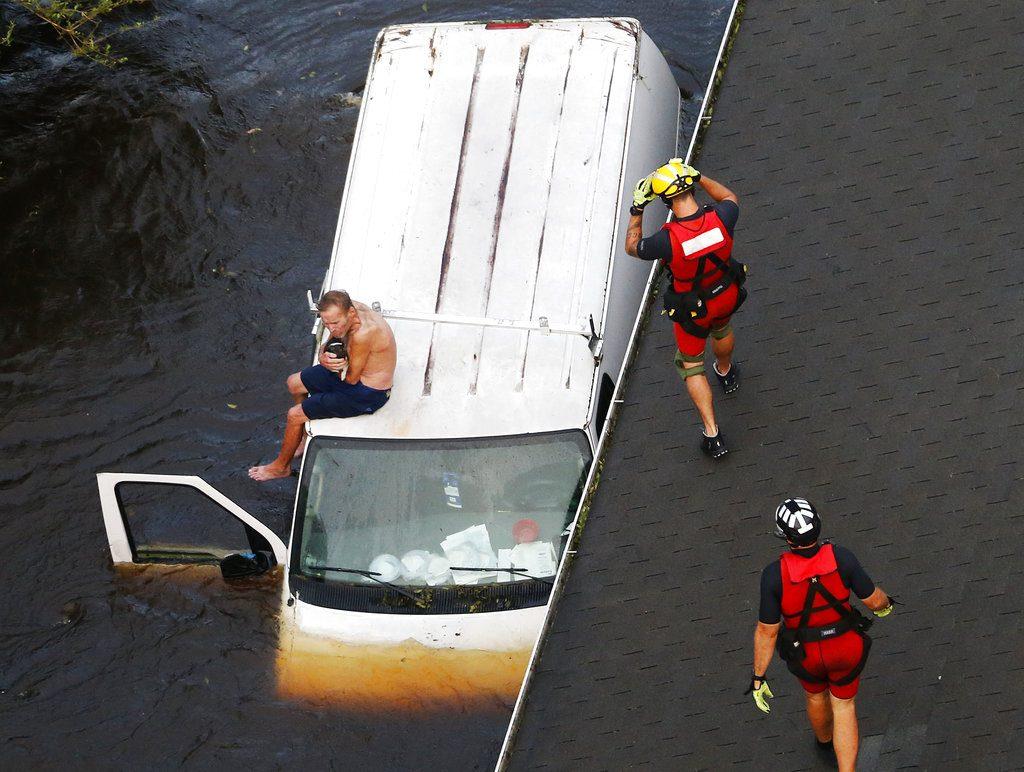Newly released video footage shows a rescue team rescuing a rabbit left stranded by Hurricane Florence in North Carolina.
The team transported the animal in its boat until they reached a safe location, and placed the rabbit on the ground.
The authority was in the neighborhood helping people evacuate when they spotted the rabbit.
People praised the fire authority, with one Twitter user stating: “Awwww! Heartfelt thanks for leaving no creature behind! Great stuff!”
Another added: “You ROCK CA Task Force 5 members!!! Thank You for saving ALL Lives!!”
Animal Rescues
A number of instances of people rescuing animals from floodwaters have surfaced, including volunteers rescuing at least 26 dogs in North Carolina.“You are OK baby girl,” reporter Julie Wilson said while carrying the dog to safety. “Nobody is leaving the dog in this mess. That’s what we are doing out here.”

Hundreds Line Up for Free Supplies in Wilmington After Florence
Still stranded by Florence’s epic floods days after the hurricane hit North Carolina, Wilmington residents lined up by the hundreds on Sept. 18, for free food, water, and tarps as officials struggled to open new routes to one of the state’s largest cities.In Wilmington, population 120,000, workers began handing out supplies using a system that resembled a fast-food restaurant drive-thru: Drivers pulled up to pallets lining a street, placed an order, and left without having to get out.
Todd Tremain needed tarps to cover up spots where Florence’s winds ripped shingles off his roof. “The roof is leaking, messing up the inside of the house,” he said.
Others got a case of bottled water or military MREs, or field rations. An olive-green military forklift moved around huge pallets loaded with supplies.

Four days after Florence blew ashore and began unloading more than two feet of rain that paralyzed much of the state, Wilmington was still virtually cut off from the rest of North Carolina, with just one road tentatively open as a supply route. Officials said they will open roads as flooding recedes and downed trees and power lines are cleared away. It’s not clear when that might happen.
Items have been brought into the city by big military trucks and helicopters, which also have been used to pluck hundreds of desperate people from atop homes and other structures.
“Thank you,” a shirtless Willie Schubert mouthed to members of a Coast Guard helicopter crew who picked up him and his dog Lucky from atop a house encircled by water in Pollocksville on Sept. 17. It wasn’t clear how long he had been stranded.
The rain finally stopped and the sun peeked through on Sept. 17, but North Carolina Gov. Roy Cooper warned that dangerously high water would persist for days. He urged residents who were evacuated from the hardest-hit areas to stay away because of closed roads and floodwaters that submerged entire communities.




